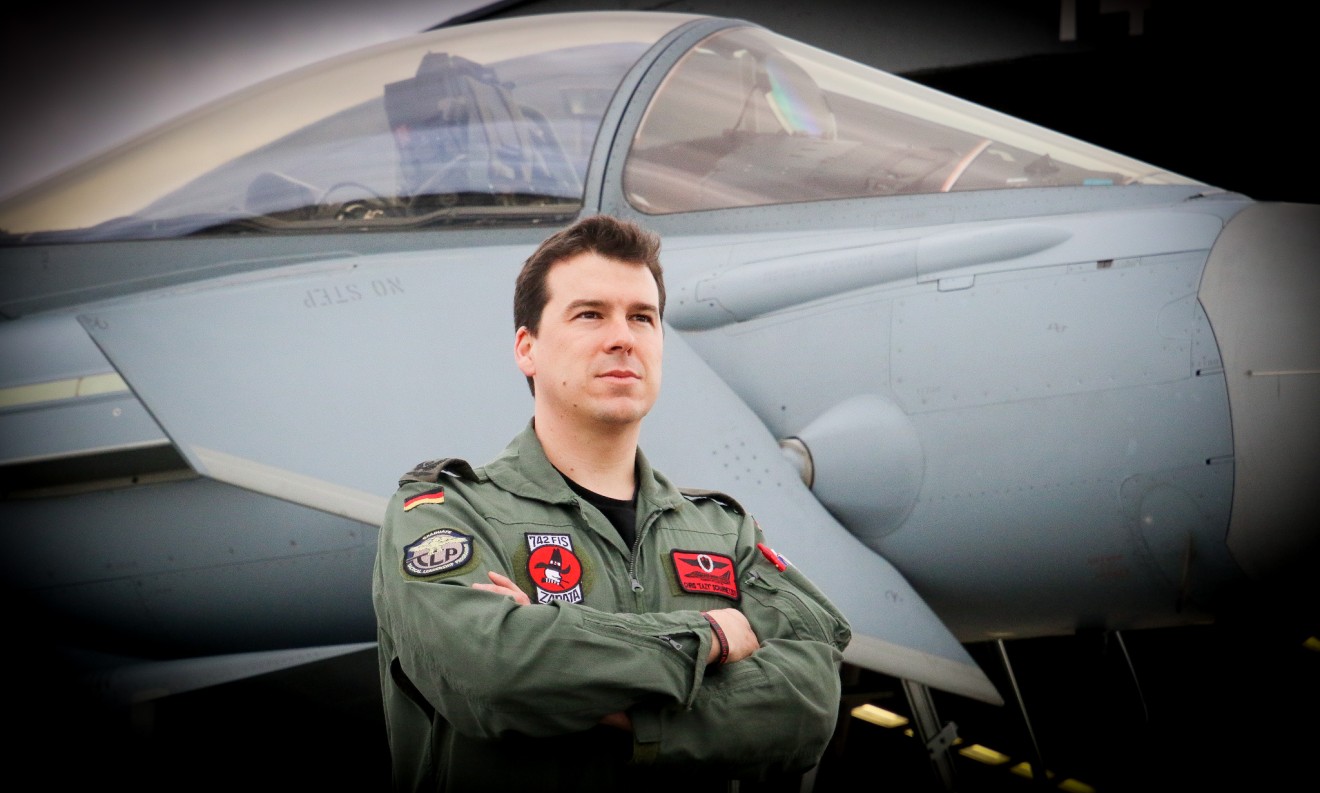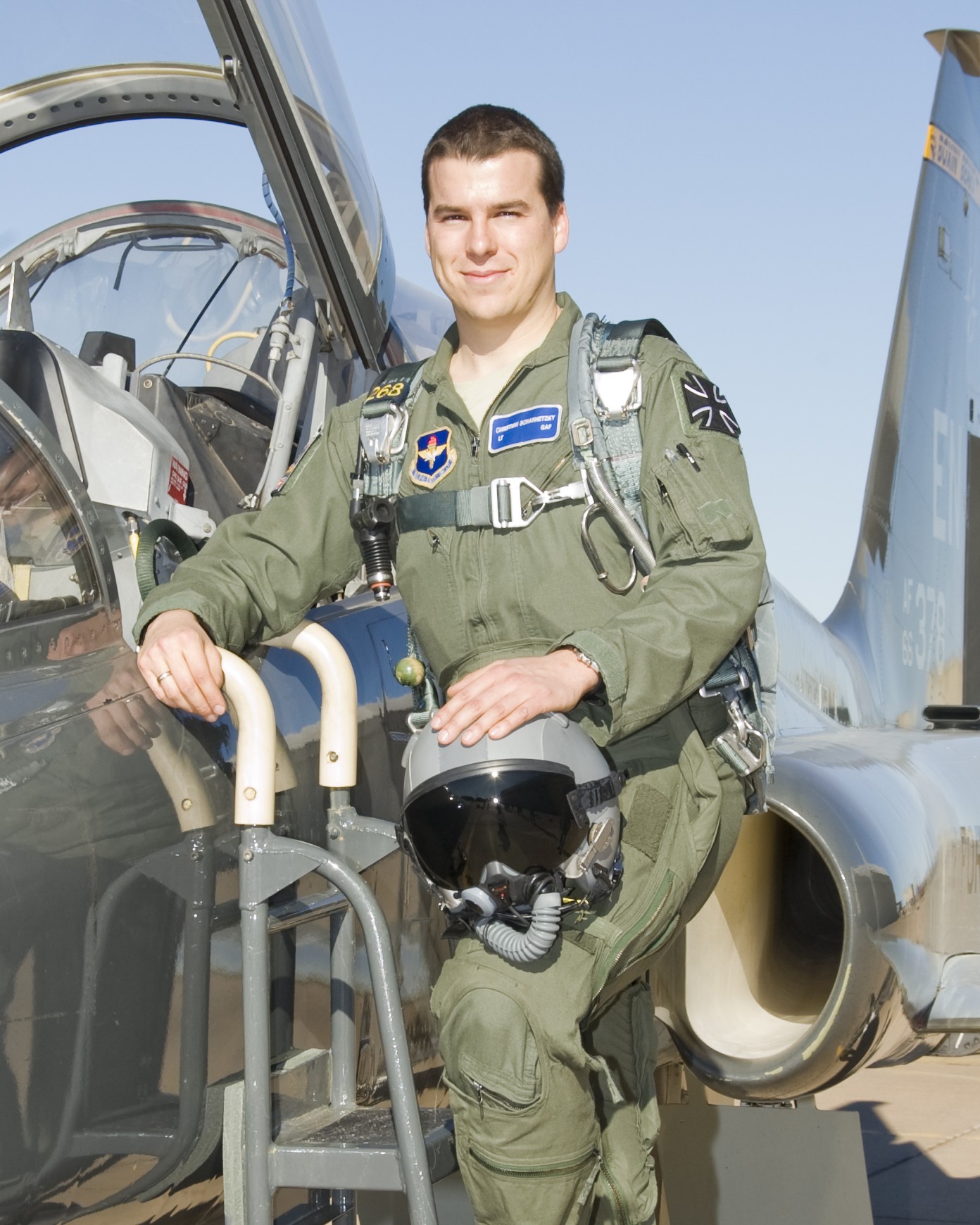
What inspired you to be a fighter pilot?
I'm from a region in Germany called Allgäu. There was a fighter bomber wing close by and as a kid I remember hearing the aircraft flying overhead and thinking that would be a very cool job.
Later my two sisters happened to find work in the city where the fighter wing was located. In fact, they both went on to marry pilots from the base, which made it very easy for me to ask more and more questions about the job.
My brothers-in-law really brought me into the flying world. As a teenager they took me to an open day, and I still have a picture of me sitting in a Tornado simulator from that day. They also took me to a couple of social events, and I really liked the community — the living and working together — on the wings.
Getting to know them and their work cemented my desire to be a pilot. When my brothers-in-law realised how keen I was they gave me all the information I needed, I was even able to shadow them for a couple of days.
How did you then turn that dream into reality?
I read everything I could about what the Bundeswehr expects from a fighter pilot. And I tried to become that exact person. At college, I chose sports and physics for my majors because I figured that a mathematical or physics background would help me and a great physical fitness is obviously a prerequisite for that calling.
I was incredibly determined. Then, a year before finishing up college, I got word from the German armed forces that they would hire me. Of course, you can never take for granted that you will achieve your goal until you actually sit in the Eurofighter.
It’s the same even when you are flying the Eurofighter. You have to keep on working to keep the job, to stay on the cutting edge of the business. I started basic training in Bavaria six days after I left school. After that, I went to Officer School for about a year and then to the University of the Federal Armed Forces in Munich. I elected to study aerospace engineering — my decision back in college finally paid off – and I finished up with a degree in aerospace engineering in 2009.
During that time, I elected to try to improve my English by going to the University of Arizona in Tucson for my diploma thesis.
When was the first time you actually got inside a cockpit?
A year after I finished university. I joined a pre-test squadron before going over to the Euro-NATO pilot training in Texas for academic practice, survival and centrifuge training. From there I went to Goodyear, Arizona, close to Phoenix. which is where you actually get to fly an aircraft the first time by yourself – in a Grob 120.
I remember it clearly. The first time you are alone in your aircraft your mind is like ‘OK, hopefully I studied everything.’ When the instructor got out, he gave me a pat on the shoulder saying, ‘You’ve got this, brother.’ I was very excited. But then I flipped a mental switch to focus on the procedures and the techniques I needed.
Right from take-off I functioned like a well programmed machine and the first time I took a step back and realised ‘Hey, this is actually easy and fun’ was ten minutes into that solo-flight. That night I promised myself I would always take the time for those easy and fun moments during every flight and never take privilege of enjoying it for granted.
That focus has been the same throughout the last ten years. Every time I do something new that focus kicks in. It’s always exciting to do something the first time but focus is really important.
When the air force carries out their assessment of potential pilots, they do a psychological evaluation to see if you have the correct mindset for flying fast jets. When you look at the pilots in my squadron, I think that ‘focus’ is a key feature they're looking for. Mental attitude is the most important thing, because you can overcome drawbacks in G-sustainability, for example.
It is more about the assertiveness of your character. I think the reason why they put you through all the training is to figure out who has the right attitude, the drive, and who is really committed to the job. Training never stops. And if you stop trying to be better than you were the day before, then I guess you stop trying to be a good pilot.
Was the training character-building?
You do about 30 hours in the Grob 120 before going on to fast jet pilot training in Sheppard Air Force Base in North Texas. For the first six months or 100 hours you’re in the Texan II and then you step up to the T-38. You earn your wings after about 12 months. In that time, you learn to fly the aircraft, fly in formation with another aircraft and do the baby steps of tactical employment — like low-level flying and manoeuvring in a tactical formation.
Once you earn your wings you think you made it, but obviously the training never stops. That’s the story of your life until you retire. I went on to the Introduction to Fighter.
Fundamentals in the T-38 Talon learning about the tactical employment of a jet you already know by then.
Those three months were really character building. Right there they check if you have what it takes and show you what will be expected of you for the rest of your career in the fighter community. Within the first 15 months, if you haven't experienced any kind of setback in your performance, you will experience it later. Everybody struggles at some point. Everybody.
What they put you through in those 15 months in Texas is important because you will need it later in your career.
Later in your life it might be paramount that you know how to deal with setbacks. When you’re flying your Eurofighter and find something isn’t how it should be in a mission, or performance-wise you’re not at your best, or you find different threats from what you were expecting, you need to be able to cope. If you allowed these drawbacks to disturb you so that you were not able to fulfil your mission, that would be unacceptable at best and could cost your life at worst.
Mentally we have to be prepared to fight in wartime and have that ability to compartmentalise and think ‘Well, this didn't go as I wanted it to, but I have to get over it and get my next steps done’. That focus will save your life.
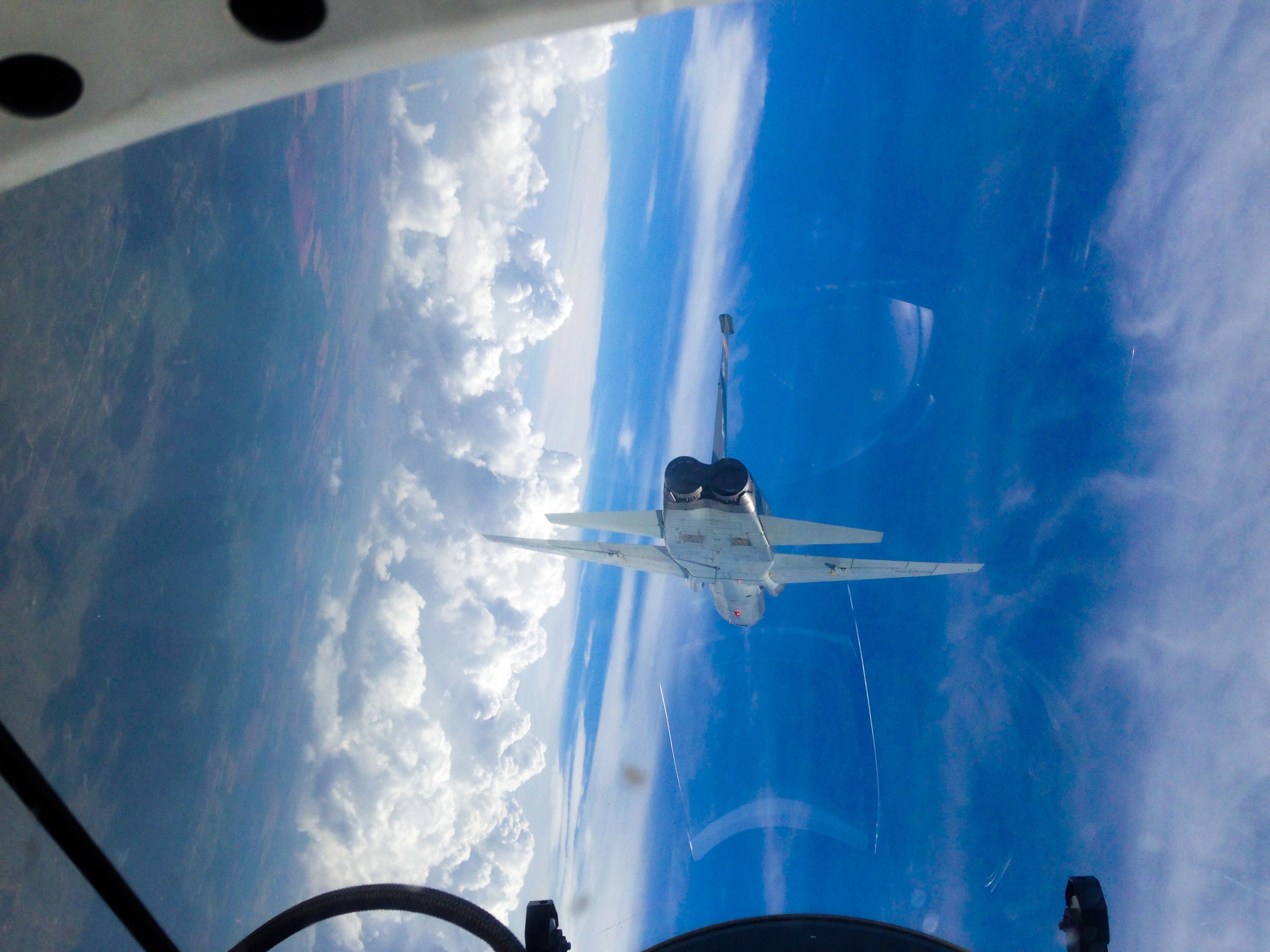
Did you return to Germany at this stage?
Normally I would have gone back to do my qualification on my chosen aircraft — either a Tornado or a Eurofighter. You don’t select them, the instructor pilots get together, to draw a picture of your character, your performance, your abilities, and come up with the best role you would fit into.
But I did not go right to the Eurofighter because there was opportunity to stay in the United States as an instructor pilot in the undergraduate pilot training programme.
Obviously, since childhood I wanted to fly Eurofighters so part of me wanted to go directly there but, after taking advice from my brothers-in-law and my mentor-IP in ENJJPT, I volunteered for the instructor role.
As it turned out this was a really good experience for me and the advice I received was excellent. I would make the same decision in a heartbeat. In 2012 I started my stint as a First Assigned Instructor Pilot (FAIP). You go right out of training and into the role as an instructor amongst other pilots, same age. Suddenly, you have to be the responsible guy in the aircraft and instruct students who are barely younger than you. You also have to live up to the standards and expectations you put onto your students each day and take pride in the character-building process during their training.
For me, that was the most intense evolution of my flying career. I went from flying an aircraft solo for the first time in October 2010 – when I was in the ‘Look at me, I'm not dying’ phase, to December 2012 when I was actually starting to teach people not to kill themselves!
Coming back to Germany in December 2015 my bag of tricks as an aviator was pretty full. I had seen a lot of things in those three years, which I have been able to capitalise on ever since. I was able to focus far more on getting the mission done correctly.
When you left the States, where did you go to next?
I went straight to Neuburg in December 2015 where I'm stationed today, though I’m soon to be transferred to Ingolstadt to join the test squadron. In the summer of 2016, I started flying the Eurofighter at Laage and by February 2017, I had completed the initial training and returned to Neuburg Airbase as a mission capable pilot air-to-air. Today I'm a combat ready Four-Ship Flight Lead air-to-air and I completed combat readiness training air-to-surface, so I can use the Eurofighter in its swing role capacity.
In total right now I have completed around 1,700 hundred flying hours, about 500 on the Eurofighter and about 1,000 as an instructor pilot on the T-38.
What do you remember of your first Eurofighter flight?
It felt exactly the same as the very first solo ride, but 1,000 times cooler because the thrust-to-weight ratio of the Eurofighter is second to none. The first time you hit the afterburners and take off with the nose high into the sky it feels like you just launched a rocket towards the moon. It really was the best experience ever.
The three years as an instructor pilot were very fulfilling but being alone in an aircraft, where you don't have to talk to another guy, it's just you and that incredibly powerful aircraft, was a lot of fun.
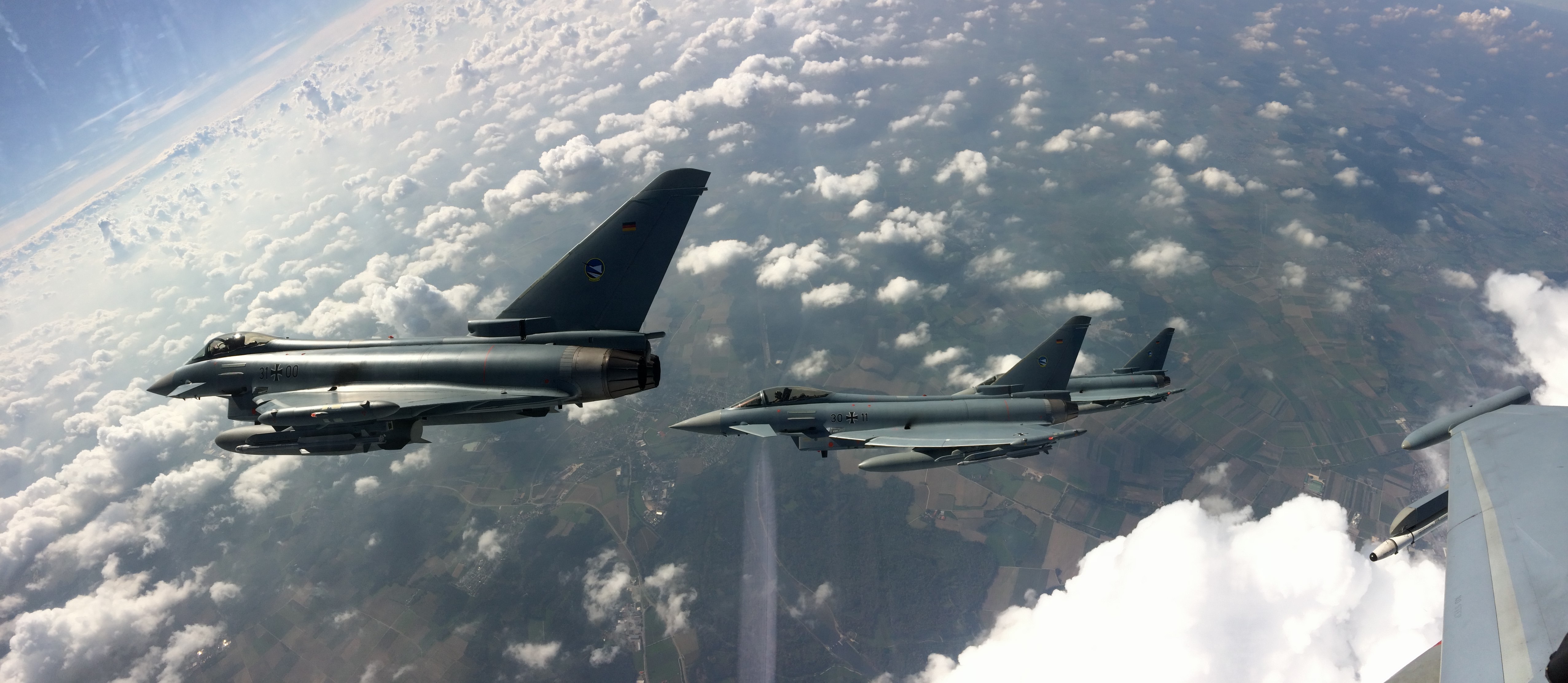
What do you think are the key personal attributes you need to get to the top?
Definitely assertiveness about fulfilling your personal goals, and striving to be the best is one. The fighter pilot world is a competitive environment. Everyone here in Neuburg shares that strong Band of Brothers mentality and we are there for each other every day. But the second we start flying there’s a competitive edge. You want to be the best of the best in your squadron. You want to be driving the mission, succeeding the best way possible.
I would also say being accountable for your own actions is another key attribute. Reliability and integrity are very important too because if you are not a reliable guy you will not survive in this community. Dealing with pressure is key too. All these tools will make you a very good pilot and help you focus on succeeding.
Do these things help or hinder in day-to-day life?
You can take off the flight suit, but you cannot get the pilot out of the person. When I drive home, I’m a dad with my kids and my family. But the default way you tackle things, is always with the fighter pilot mentality. I’m always assertive and if I want to get something done, I get it done. I will figure out a way, the best way to do it. You can never just turn that switch off.
I would say that fighter pilots are probably interesting people to deal with because of that. If you are part of the solution, they are very easy to work with. If you're part of the challenge, then it's going to be interesting!
What’s the key difference between a fighter and commercial pilot, in terms of skillset and mindset?
The common traits are accountability and reliability. The commercial pilot has to take care of 200 passengers and their thought process is more driven by safety. They’ve also got to think commercially, about operating in an economical way.
While the fighter pilot also always has the safety aspect in mind, they need to weigh up the risks versus benefits in the air in a heartbeat and sometimes make a decision between survival and mission success. To make mission critical decisions, like, can I proceed into a weapons employment zone of a possible hostile fighter without sacrificing the mission?
While the mission in the commercial world is focussed mainly on safety, the fighter pilot sometimes has to put his flight, depending on the mission risk level, in the context of John Wayne’s quote: Courage is being scared to death but saddling up anyway.
What are the highlights of your career to date?
Two instances are imprinted on my brain as very good learning experiences. The first was the Arctic Challenge Exercise in Bodø 2019. It’s one of the best exercises we have on the continent.
It was a great deployment with very realistic scenarios for large force employment. We brought a lot of Eurofighters and brothers from Neuburg and Wittmund and we represented Germany very well. For me the best part of that exercise was being able fly in the same COMAO side by side with some of my former students from other nations like Norway and the United States, who I trained during my time in Texas. It was very rewarding to see those personalities succeeding in the fighter world knowing that I was fortunate enough to have been part of the moulding process of those aviators.
The second experience was the Tactical Leadership Programme in Spain. It was a chance to work in the international environment again and also a character-building event.
In it you are amongst 50 highly-trained, very professional military aviators, who all know their weapons systems very well, know their capabilities, know all their and the enemies’ tactics, techniques and procedures. I was lucky to be elected as a mission commander for one day. It was an interesting and rewarding day.
You have to know your business — the rules, the numbers, the threat rings, the tactics … everything. You also have to display in a heartbeat in both verbal and non-verbal ways that you bring exactly the right character attributes with you.
I was the guy who was accountable for the whole COMAO — for all 30-plus aircraft. When you’re up in front— the make-it or break-it guy — you have to transmit the integrity that makes a fighter pilot with every word you say.
And you need the assertiveness everybody is looking for in every decision you take. You want those warriors to follow your plan in the air, and they only do if they realise you walk the talk already on the ground.
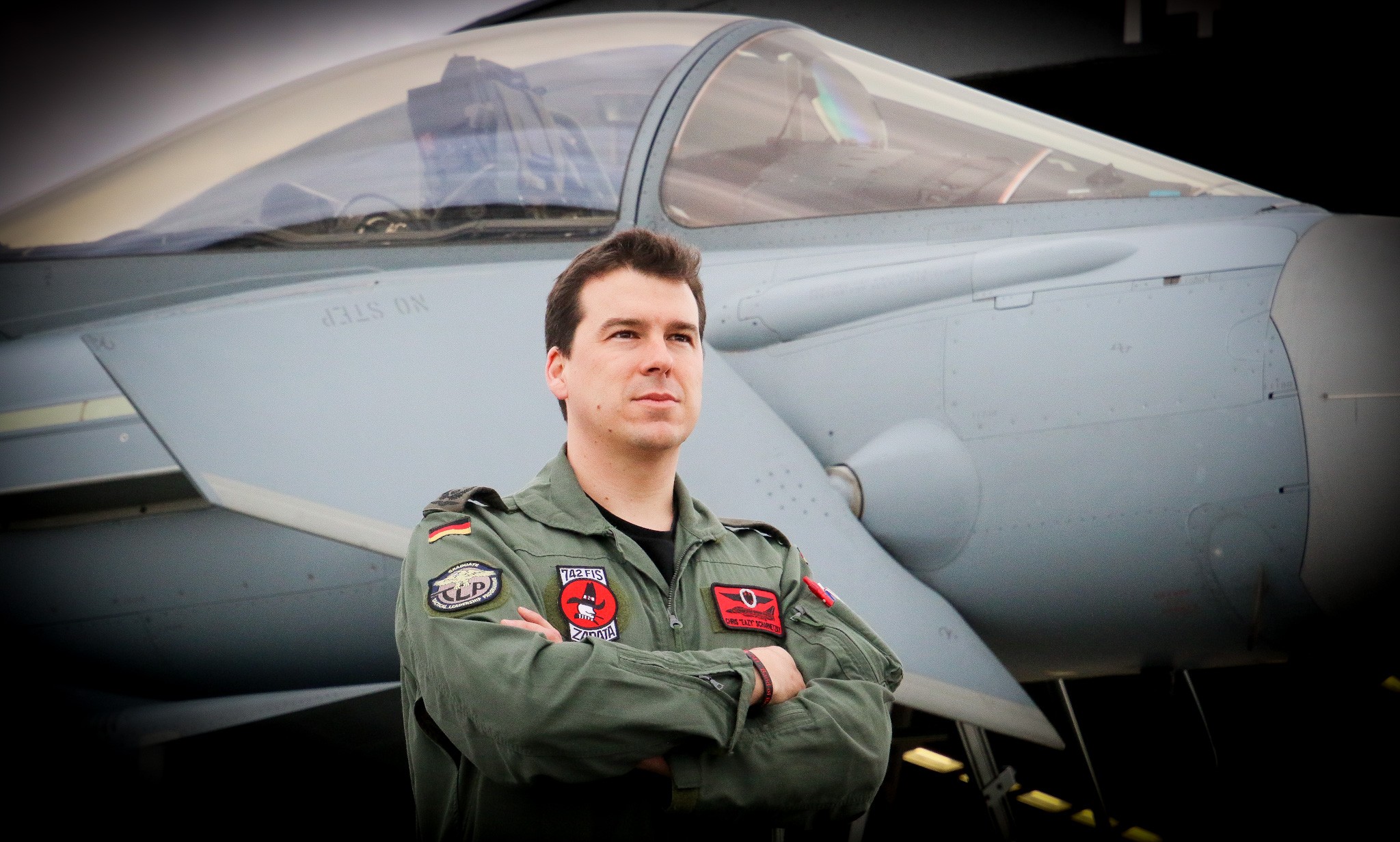
What do you think about the Eurofighter? How would you describe it?
I was trained in an aircraft which was 60-years-old, the T-38. Learning ‘how’ to fly the aircraft was the most important thing. Going into the Eurofighter flying was not even secondary, it was tertiary because the Eurofighter design is all about carefree handling.
The aircraft pretty much flies itself. You tell it where to go and it will tell you if you get too slow or off track. But at the same time, it will give you a myriad of information that you have to process, prioritise and compartmentalise.
You get audible info, with three different stations talking, there are the three displays and the head-up control panel. All the different sensors are fusing into the picture, and all of this is displayed at the same time. The system gives you priority messages from things like the DASS (Defensive Aid Sub-System) or if you've been engaged by a hostile fighter while you are on your mission.
In this instance, you have a split second to make your mind up what to do. Should I shift my attention from, for example, a surface-to-air engagement to air-to-air? You do it in a heartbeat. As a machine, the Eurofighter is excellently designed to help you in that decision process.
The mental and physical demands on your body must be quite exhausting? Yes, but the equipment like the G-suit is excellent. It helps us to sustain high G-force loads while still being able to concentrate on the thought process. The limiting factor is not so much physical but mental. That’s why the selection process is really important. The information has to go through the brain of the pilot, and that has to work under real physical stress.
What's attracted you to your next role as a test pilot?
I love the operational world of the Eurofighter and flying my daily missions but over the last couple of years I’d become very keen to switch over to the test side of the house, which looks at the operational testing of future equipment.
I was lucky because they only look for new test pilots every ten years or so. When the request came I was in the right place at the right time, with the right education and training.
I hope that over the years I remain in service I can actually try to make the lives of future pilots easier with the equipment that is being introduced. I will still be heavily involved with Eurofighter and I'm looking forward to it. It's already a great aircraft, but to make it even better and help the operator to get improvements they need to stay on the cutting edge is what I'm really looking forward to. The Quadriga decision was good news for the Eurofighter and now, with the implementation of the E-Scan radar and new effectors, it will be a very interesting period to be a test pilot.
Do you have any advice you’ve been given that you’d share for anyone reading this who’d want to follow in your footsteps?
My motto for life might help them. When you’re aiming for perfection, it's very easy to fall into a habit of being so focused on the job that you totally forget to enjoy the moments you are airborne — like the first time solo or the first time in the Eurofighter. That’s why when I started flying, I set my motto as ‘chill and aim for excellence’. I guess that's why they call me ‘Eazy’ because yes, I'm very focused on the job, but I always make sure to remember the fun part in everything I do, too.
CHRISTIAN "EAZY" SCHARNETZKY
German Air Force
Based at Neuburg
500 flying hours on Eurofighter Typhoon
TLP certified
Lead and certified in air-to-air and air-to-surface role
